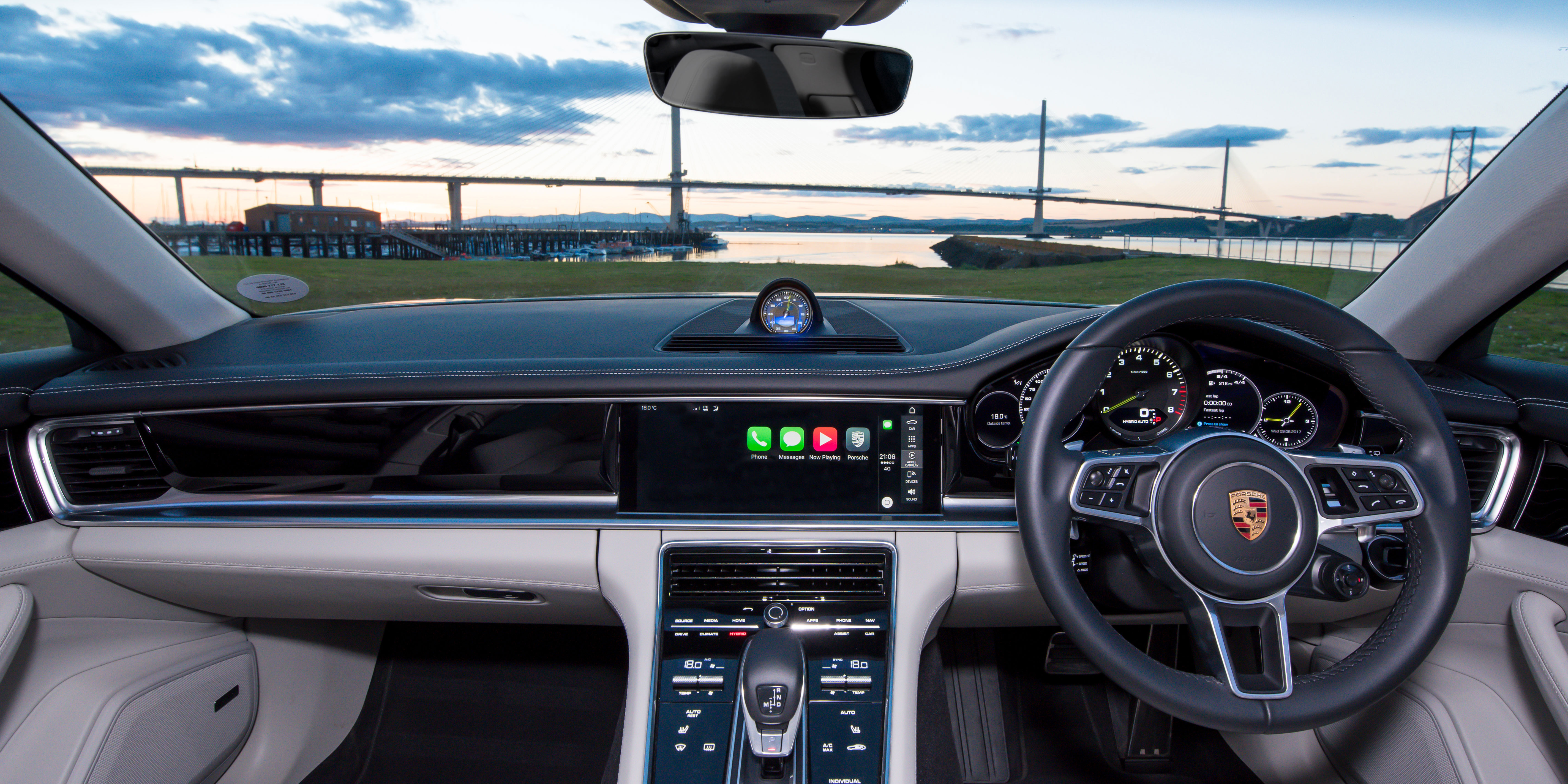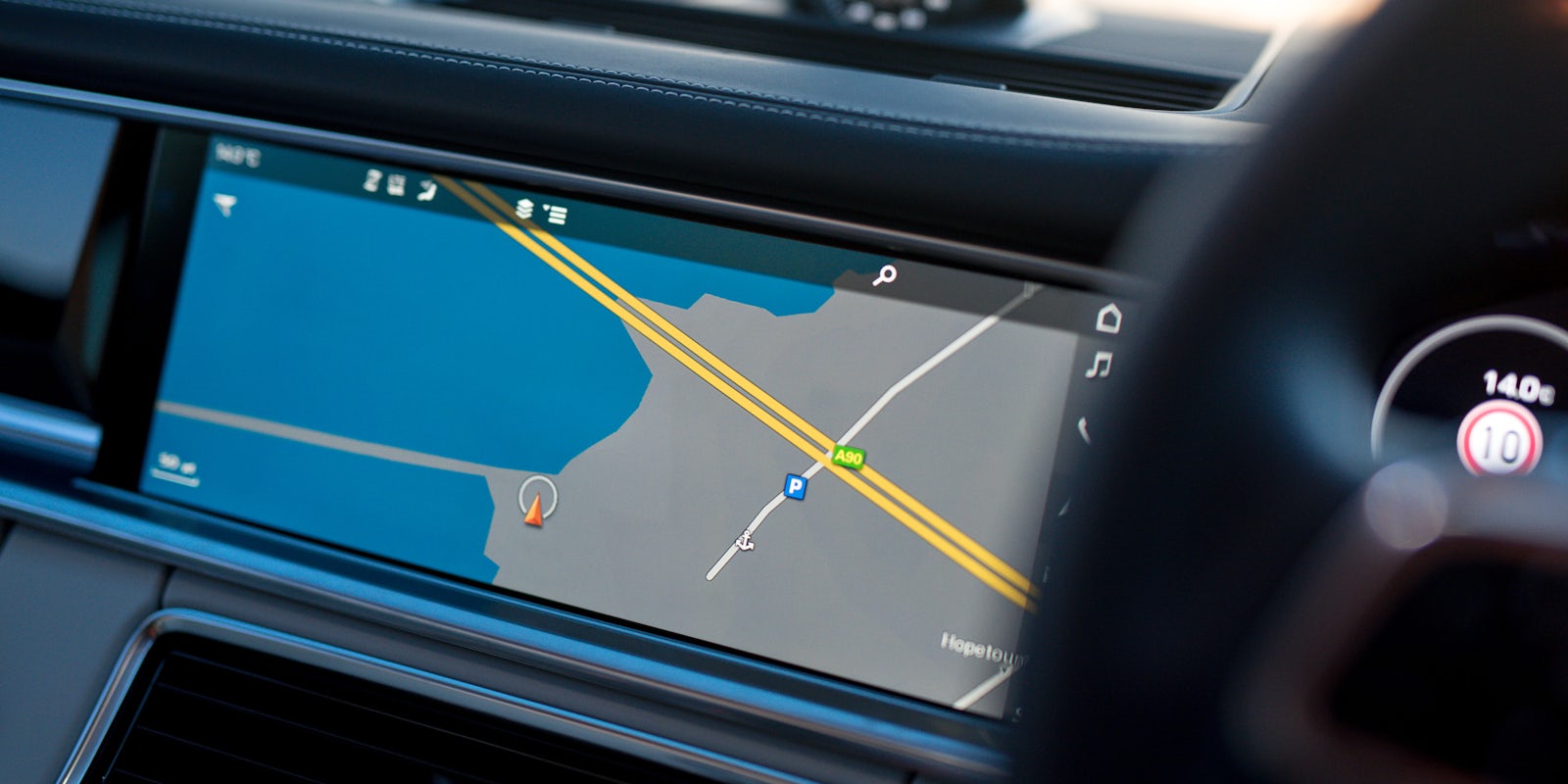Porsche Panamera interior
The Porsche Panamera’s interior looks and feels absolutely fantastic. It comes with plenty of high-tech features too, but add a few optional extras and the price starts to shoot up.
Style

The Porsche Panamera has a simple, understated, yet very sporty interior. The broad dashboard and raised centre console make you feel like your sitting in a lovely leather-clad cocoon and there’s plenty of adjustment to help you find your ideal seating position.
Unlike in some sporty cars, the Panamera doesn’t come with a chunky flat-bottomed steering wheel. Instead, it gets a lovely thin one which is complemented by a pair of metal shift paddles and a few knurled metal drive-mode switches. It all feels very classy indeed.
Every Panamera comes with lots of lovely glossy plastic and real polished metal trims on the doors, dashboard and even around the cupholders in the centre console. Every surface – even those you’ll rarely touch – feels super solid and there aren’t any scratchy plastics to spoil the show.
All models come with leather sports seats in black or grey, but you can pay extra to have them trimmed in a range of brown, cream, burgundy and even two-tone designs. You can replace almost all of the interior’s soft-touch plastic pieces with leather or suede-like Alcantara, too, but these plush upgrades aren’t exactly cheap. The optional wood, aluminium and carbon fibre interior upgrade packages are even more expensive.
The Porsche Panamera might be one of the largest, most limo-like cars Porsche builds, but it still feels very sporty inside.
- Used
- £30,995
Infotainment

Every Porsche Panamera comes with a 12-inch central infotainment display and two extra screens positioned either side of a traditional analogue rev counter.
The central touchscreen is one of the sharpest in any car and it comes with some physical shortcut buttons and a scroll wheel to help you sift through the various menus, but these are all hidden behind the Panamera’s large and rather awkwardly placed gear lever.
The system makes a clicking sound to let you know you’ve pressed an icon, but it doesn’t deliver any haptic feedback such as you get in an Audi S7 so it isn’t particularly easy to use on the move.
Unlike Audi’s rather fiddly on-screen system, the Porsche Panamera comes with physical buttons for the heating and ventilation controls. But, you have to mess around with some touchscreen menus to adjust the position of the air vents in the centre console which seems a bit daft.
On a brighter note, the maps that are displayed as part of the standard satellite navigation system are super crisp and easy to read, and entering an address using the on-screen keyboard is pretty easy to do – when you’re parked, at least.
You can also view the map screen on the smaller digital display to the right of the rev- counter, or swap this out for an analogue-style speedometer using shortcut buttons on the steering wheel.
If you aren’t a fan of Porsche’s own navigation system, you can use the built-in Apple CarPlay feature to mirror your phone’s screen on the Panamera’s infotainment display instead. This is easy to set up and a doddle to use, but it doesn’t make the best use of the car’s widescreen central display and leaves a rather unsightly blank patch on one side.
This feature does let you play music from apps such as Spotify through the Porsche Panamera’s stereo without resorting to a conventional Bluetooth connection. The standard stereo’s a fairly beefy 10-speaker system, but you can upgrade to a 14-speaker Bose system for some added punch. If that’s not enough, there’s a (much) more expensive Burmester system with a whopping 21 speakers and a subwoofer to really rattle your fillings.
- Used
- £30,995